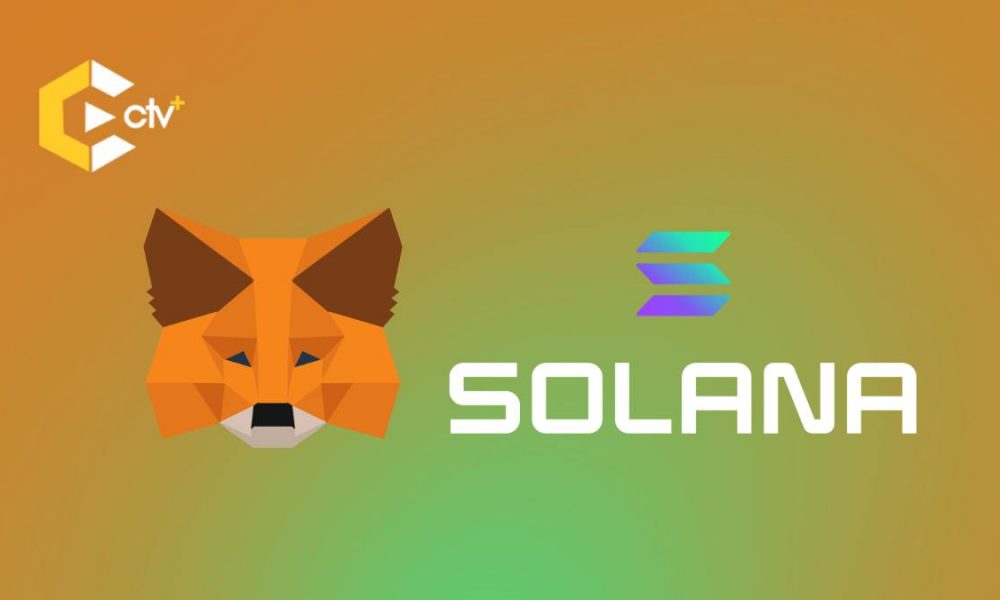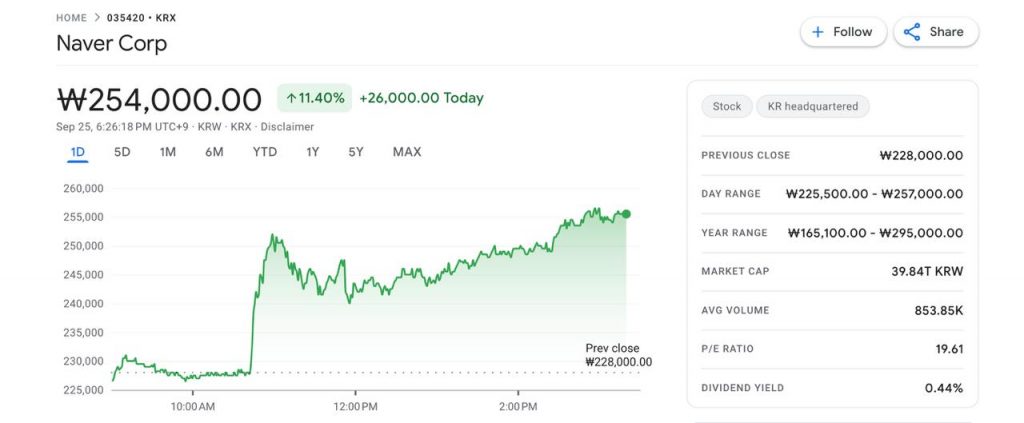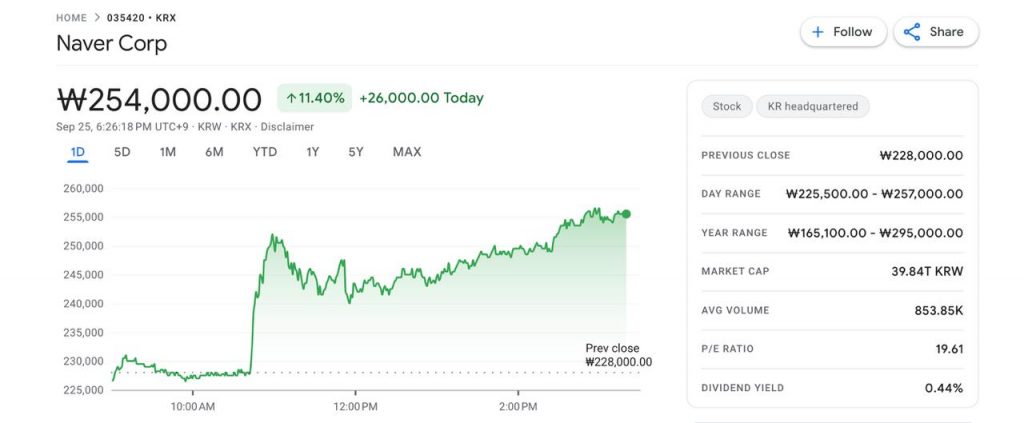News
4 Reasons Ethereum Pumped in August 2025

Ethereum has been on fire. With ETH hitting $4,800 and breaking past resistance levels, the world’s second-largest cryptocurrency has again stolen the spotlight. The same question echoes from Twitter threads to crypto Telegram groups to professional trading desks: why is Ethereum pumping?
Bitcoin often grabs the headlines, but Ethereum has been quietly building momentum that is now impossible to ignore. As ETH closes in on the $5,000 mark, levels not seen since the peak of 2021, both retail and institutional investors are rushing to understand what’s fueling this latest rally.
In this article, we’ll break down the five main drivers behind Ethereum’s surge, compare its performance with Bitcoin, highlight what traders are watching, and consider whether this pump is the beginning of something much bigger.
The best wallet for managing and swapping ETH
Tangem is a self-custody hardware wallet, meaning your private key is generated and stays inside the card’s secure element. There’s no online account or cloud to hack, and every transaction requires a physical tap plus biometric authentication.
Buying and Swapping to ETH safely in Tangem
Use Tangem’s built-in DEX aggregator for a simple flow that stays in your wallet session (no CEX risk). For more control, connect Tangem to a DEX (e.g., Uniswap) via WalletConnect.
Other tips:
- Fees & slippage: Choose an L2 (Arbitrum, Base, Optimism) for cheaper gas. Start with ~0.3–1% slippage; tighten for large trades or illiquid pairs.
- Allowances: When a DEX asks for token approval, prefer exact or “limited” approvals over “infinite.” Periodically revoke old approvals using a trusted revoker tool.
- Gas buffer: Keep a small ETH buffer on each network you use (e.g., mainnet/L2) so you’re never stuck, unable to move funds.
Use CEXs primarily for on/off-ramp convenience. After purchasing, transfer assets back to Tangem and consider exchanges as temporary liquidity rather than long-term holding.
5 Reasons Behind Ethereum’s Surge in August 2025.
1. Cheaper Gas, Busier Chain
Ethereum has always faced criticism for its high transaction fees, often called “gas fees.” During the last bull run in 2021, it was common for users to pay upwards of $100 just to move tokens or mint an NFT.
However, times have changed. Thanks to the rise of Layer-2 scaling solutions, Ethereum transactions have become significantly cheaper and faster. These solutions process transactions off-chain and then post them to Ethereum in bulk, easing congestion and reducing costs.
Trading on decentralized exchanges (DEXs), minting NFTs, and even transferring tokens have become much more affordable for users. For Ethereum itself, this means renewed adoption and increased activity on the chain. Every interaction with dApps or protocols still relies on ETH as the underlying fuel.
Simply put, cheaper gas has made Ethereum more usable, and more usage equals more buying pressure.
2. DeFi and NFTs Aren’t Dead Yet
It’s easy to forget, but Ethereum is an entire ecosystem powering decentralized finance (DeFi), NFTs, and thousands of decentralized applications. After the brutal bear market of 2022 and 2023, many assumed DeFi and NFTs were “dead.” Trading volumes collapsed, and most projects went quiet. But in 2024 and now into 2025, both sectors have started to bounce back.
DeFi platforms like Aave, Uniswap, and Lido are once again recording higher liquidity and user participation. Meanwhile, NFTs are evolving beyond speculative JPEGs into more utility-driven products, such as NFT-based gaming assets, ticketing, and real-world tokenization projects.
As the underlying infrastructure for most of these applications, Ethereum directly benefits from this. The more DeFi and NFTs regain traction, the more ETH is staked, locked, or burned. That activity is adding momentum to Ethereum’s current rally.
3. Whales and Institutions Are Quietly Stacking
Retail traders aren’t the only ones buying ETH. On-chain analytics reveal that whales and institutional investors have steadily accumulated Ethereum throughout this rally. In fact, large wallets holding between 1 million and 100 million ETH have collectively added hundreds of thousands of coins in the past few weeks. This type of accumulation is a classic signal of long-term conviction.
For institutions, Ethereum represents more than just another altcoin. It’s a programmable settlement layer for the next generation of finance. Ethereum is positioned as a foundational technology for tokenized real-world assets and decentralized applications. That’s why traditional funds, asset managers, and corporate treasuries are slowly but steadily building exposure.
When big money stacks ETH, it sends a strong message: the smart money sees a future here.
4. Bitcoin’s Rally Is Giving ETH Extra Lift
It’s impossible to talk about Ethereum’s pump without mentioning Bitcoin. As always, Bitcoin sets the tone for the entire crypto market. With BTC currently trading above $100,000, investor sentiment has turned bullish.
Historically, Ethereum tends to follow Bitcoin’s lead, but with greater volatility. When Bitcoin climbs, ETH usually climbs faster. This has been true in this current cycle, with Ethereum not only keeping pace but sometimes outperforming Bitcoin on percentage gains.
This dynamic has also revived the famous “flippening” narrative — the idea that Ethereum could one day surpass Bitcoin in market capitalization. While that remains speculative, the fact that traders are discussing it again shows how much confidence has returned to ETH.
Ethereum vs. Bitcoin: Who’s Winning This Round?
So far this year, Bitcoin has been the stronger overall performer. The ETF hype narrative have pushed BTC to new highs, but Ethereum is now closing the gap.
While BTC remains the largest and most recognized crypto, Ethereum offers a different value proposition: it’s not just money, it’s infrastructure. This unique positioning is why many analysts believe ETH could eventually outperform BTC in a sustained bull market.
What Traders Are Watching Next
Beyond the five main reasons, traders are closely monitoring several other signals that could impact ETH’s price in the short term:
- Support and resistance zones: ETH has strong support around $4,400 and major resistance near $5,000. A clean breakout above $5,000 could open the door to $6,000 in the coming months.
- Technical indicators: The daily Relative Strength Index (RSI) suggests Ethereum may be nearing overbought territory, which means a pullback is possible before the next leg up.
- Staking data: Over 32 million ETH is currently staked, reducing circulating supply and applying upward pressure on price.
- Whale movements: If large holders continue to accumulate, it could signal confidence that the rally is just beginning.
Risks and Challenges
Of course, no rally is without risks. Ethereum still faces several headwinds that could slow or even reverse its momentum:
- Regulatory uncertainty: Short-term sentiment could sour if the SEC delays or rejects a spot ETH ETF.
- High competition: Other Layer-1 blockchains like Solana and Avalanche are still fighting for market share.
- Market corrections: A sharp pullback in Bitcoin would almost certainly drag Ethereum down.
- Scalability pressures: While Layer-2 solutions are helping, Ethereum must continue to upgrade to maintain dominance.
Conclusion
Ethereum’s rally is powered by ETF hype, lower transaction costs, renewed DeFi/NFT activity, institutional accumulation, and Bitcoin’s broader bullish momentum. At around $4,236 today, ETH is demonstrating that it remains the backbone of Web3 and the most significant altcoin in the market.
The road ahead won’t be smooth. Pullbacks and volatility are inevitable, especially in a market as unpredictable as crypto. However, the bigger picture is clear: Ethereum shows real strength as a financial asset and as the foundation of decentralized innovation.
Business
Solana is now available on MetaMask

Users can now access the Solana blockchain and interact with dApps using the multichain wallet MetaMask.
MetaMask has added support for the Solana blockchain to its browser extension. This brings MetaMask closer to its goal of becoming a one-stop wallet for all networks.
MetaMask is a popular cryptocurrency wallet and gateway to blockchain applications. It allows users to store, send, receive, and interact with cryptocurrencies and decentralized applications (dApps), primarily on Ethereum and other supported blockchains.
Solana is a high-performance blockchain designed for fast and low-cost transactions. Solana uses a unique combination of proof-of-stake (PoS) and a mechanism called proof-of-history (PoH) to process thousands of transactions per second with very low fees.
The integration of Solana in MetaMask allows users to send, receive, swap, bridge, and purchase Solana-based tokens directly within MetaMask, along with interacting with Solana dapps, all with the robust security that MetaMask is known for.
What once required separate wallets like Phantom for Solana and MetaMask for Ethereum is now a unified experience, making it easier than ever to explore both ecosystems.
The latest version of the MetaMask Extension enables users to operate Solana accounts natively, switching between Ethereum and Solana in a unified interface.
The change isn’t just for desktop users; MetaMask will introduce Solana support for its mobile app in a few weeks, bringing this experience to users on the go.
According to MetaMask, this integration is part of its broader vision to simplify the crypto user experience across multiple chains. The company has confirmed plans to support more non-EVM networks in the coming months, working toward a future where one wallet can serve every blockchain.
MetaMask revealed in late February of this year that it was expanding its ecosystem beyond EVM chains and planned to integrate Solana and Bitcoin while working to eliminate gas fees.
The wallet provider stated that in May, Solana will be integrated as the first EVM chain, and Bitcoin will follow by Q3.
On eliminating gas fees, MetaMask stated that “Longer term, we believe we can eliminate gas as a user-facing concern in nearly all interactions. (We’ll get to that!)”
Solana’s rapid growth in 2025 makes this integration especially impactful. Its DeFi total value has surged to about $4 billion, led by Jupiter and Raydium. Stablecoin supply hit $13 billion in April, while the network now processes over 200 million transactions daily, peaking at 355 million in one week.
News
Naver and Dunamu in talks to acquire South Korea’s Upbit exchange

South Korea’s financial markets are buzzing after confirmation that Naver Financial, the fintech arm of Naver Corp., is in active talks with Dunamu Inc., operator of the country’s largest crypto platform, Upbit crypto exchange.
The disclosure came after a dramatic 11 percent surge in Naver’s shares, sparked by reports that the two companies are exploring a potential merger deal that could reshape the country’s digital economy.
In its filing to regulators, Naver Financial acknowledged discussions with Dunamu over a variety of possibilities, including a potential share swap merger, while making clear that no definitive agreement has yet been reached. Dunamu, in a separate message, confirmed it was examining ways to cooperate with Naver but emphasized that no finalized deal has been signed.
If completed, the Naver Financial merger with Dunamu would mark one of the most significant alliances in the history of South Korea’s fintech space. Naver Pay, one of the nation’s most widely used digital wallets, competes with Kakao Pay, Toss, and traditional banks in the booming payments sector. Pairing its user base and distribution channels with Upbit’s dominance in cryptocurrency trading would create a financial powerhouse that fuses mainstream payments with digital-asset markets.

Under the arrangement, Naver Financial would issue new shares to acquire holdings from existing Dunamu shareholders, effectively turning Dunamu into a wholly owned subsidiary. Negotiations are reportedly focused on determining the swap ratio for Dunamu’s unlisted stock according to Bloomberg. Naver Corp. already controls more than 80 percent of Naver Financial.
The timing of these discussions highlights a growing global trend where fintech companies and internet platforms seek to integrate blockchain-based payments and crypto trading features. With nearly one-third of South Korea’s population actively participating in digital asset markets, the country has become a proving ground for new financial technologies. On certain trading days, Bloomberg reports volumes on local crypto exchanges even surpass turnover on certain stock indexes.
Political momentum is also shaping the landscape. President Lee Jae Myung, who pledged to build a crypto-friendly South Korea, introduced the Digital Asset Basic Act earlier this year. The legislation aims to expand protections for investors while promoting industry innovation.
The talks also coincide with Korea Blockchain Week in Seoul, an event drawing global crypto executives, regulators, and investors. Rival exchange Bithumb recently signed a deal with World Liberty Financial, a venture linked to U.S. President Donald Trump, indicating how deeply international politics and finance now intersect with South Korea’s crypto sector.
For Naver, known for its dominant search engine and internet services, the Naver Financial merger represents an opportunity to extend its reach into digital assets. For Dunamu, whose Upbit crypto exchange is already the top trading platform in South Korea, access to Naver’s vast ecosystem could embed cryptocurrency into daily consumer activity, from mobile payments to e-commerce transactions.
In October last year, the South Korean Financial Service Commission (FSC) launched an investigation into the exchange to determine if it engaged in anti-monopoly practices. Regulators discovered over half a million KYC violations and as a result restricted the exchange from acquiring new users in February, 2025. In March however, this suspension was temporarily revoked after Dunamu took legal action against the Korean financial regulators.
The Naver Financial merger with Dunamu could set the standard for how traditional fintech services and crypto exchanges integrate, shaping not only domestic competition but also influencing the global conversation on the future of money.
Over the last 24 hours, the Upbit trading volume stands at $2.8 billion.
Business
Understanding the Basics of Blockchain for Beginners

This paragraph serves as an introduction to your blog post. Begin by discussing the primary theme or topic that you plan to cover, ensuring it captures the reader’s interest from the very first sentence. Share a brief overview that highlights why this topic is important and how it can provide value. Use this space to set the tone for the rest of the article, preparing readers for the journey ahead. Keep your language approachable, yet informative, to create a strong connection.
Sometimes, the simplest moments hold the deepest wisdom. Let your thoughts settle, and clarity will find you. Use this quote space to share something inspirational or reflective, perfectly aligned with the theme of your article.
This paragraph dives deeper into the topic introduced earlier, expanding on the main idea with examples, analysis, or additional context. Use this section to elaborate on specific points, ensuring that each sentence builds on the last to maintain a cohesive flow. You can include data, anecdotes, or expert opinions to reinforce your claims. Keep your language concise but descriptive enough to keep readers engaged. This is where the substance of your article begins to take shape.


As you move toward the midpoint of the article, this paragraph provides an opportunity to connect earlier ideas with new insights. Use this space to present alternative perspectives or address potential questions readers might have. Strike a balance between depth and readability, ensuring the information remains digestible. This section can also serve as a transition to the closing points, maintaining momentum as you steer the discussion to its final stages.
Wrapping Up with Key Insights
In this concluding paragraph, summarize the key takeaways from your article, reinforcing the most important ideas discussed. Encourage readers to reflect on the insights shared, or offer actionable advice they can apply in their own lives. This is your chance to leave a lasting impression, so make sure your closing thoughts are impactful and memorable. A strong conclusion not only ties the article together but also inspires readers to engage further.
-

 Events8 years ago
Events8 years agoThese ’90s fashion trends are making a comeback in 2017
-

 Education8 years ago
Education8 years agoThe final 6 ‘Game of Thrones’ episodes might feel like a full season
-

 Events8 years ago
Events8 years agoAccording to Dior Couture, this taboo fashion accessory is back
-

 Education8 years ago
Education8 years agoThe old and New Edition cast comes together to perform
-

 Interviews8 years ago
Interviews8 years agoPhillies’ Aaron Altherr makes mind-boggling barehanded play
-

 Business8 years ago
Business8 years agoUber and Lyft are finally available in all of New York State
-

 Education8 years ago
Education8 years agoDisney’s live-action Aladdin finally finds its stars
-

 Interviews8 years ago
Interviews8 years agoSteph Curry finally got the contract he deserves from the Warriors




